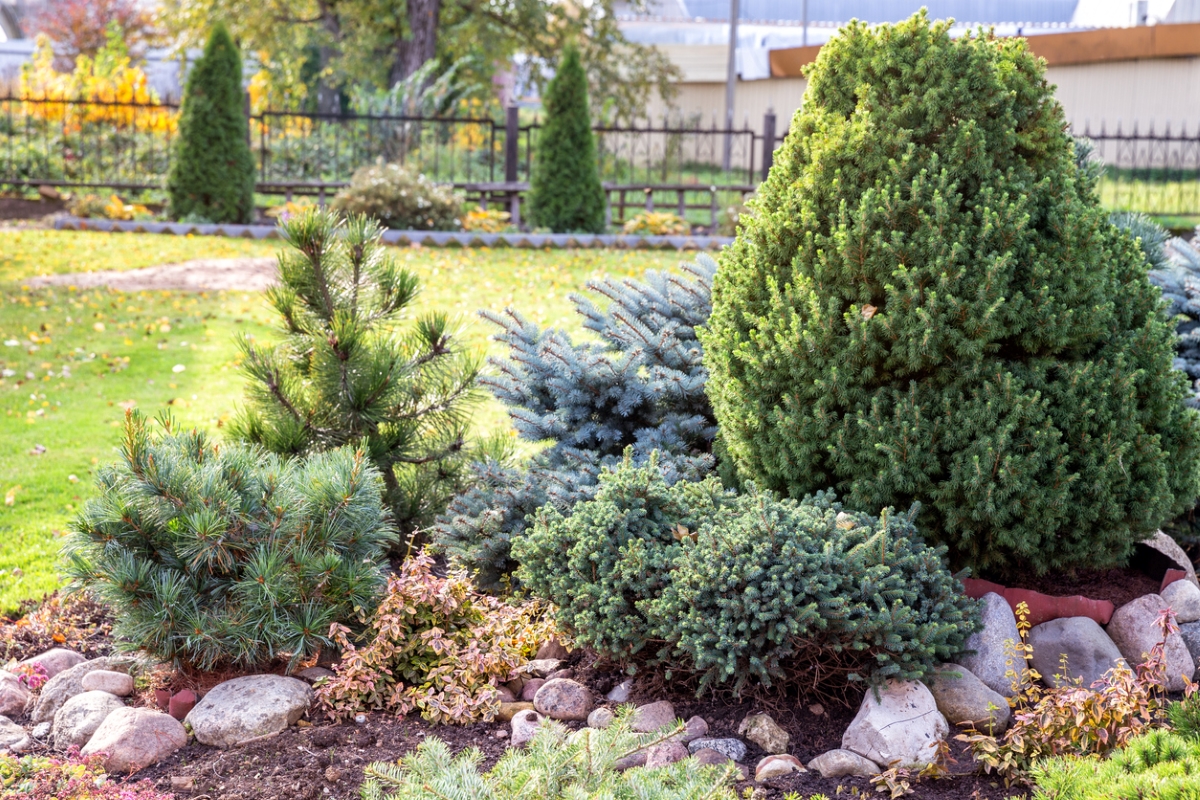We may earn revenue from the products available on this page and participate in affiliate programs. Learn More ›
Landscaping with evergreens can boost curb appeal all year long. Many of them are also quite dense, serving as stellar privacy bushes. In fact, some are so dense that they’re nearly impenetrable, so they can even add security to a home.
What is an evergreen?
When referencing plants, “evergreen” simply means that a plant retains its foliage all year long as opposed to losing its leaves during certain seasons. However, an evergreen shrub or tree still can change throughout the year. It might change color, drop a few leaves or needles, or bloom with colorful flowers, depending on the shrub and season. Here are other characteristics of evergreen plants:
- Not all evergreens are conifers.
- Many evergreens take well to trimming and even formal shaping.
- Evergreen shrubs come in many sizes and shapes.
- Gardeners can find evergreens to suit most any soil type or location in the landscape.
- Year-round leaves do not have to be green; some boast red, bluish, silvery, and yellow foliage.
- Heights vary from low growing evergreen shrubs to near-tree heights.
- Some evergreen shrubs flower and even produce berries for wildlife or people.
Get to know the benefits of evergreen bushes and those that grow best in your region. To get you started on options, below are some of the best evergreen shrubs to plant this year.
1. Mr. Bowling Ball White Cedar (Thuja occidentalis ‘Bobozam’)
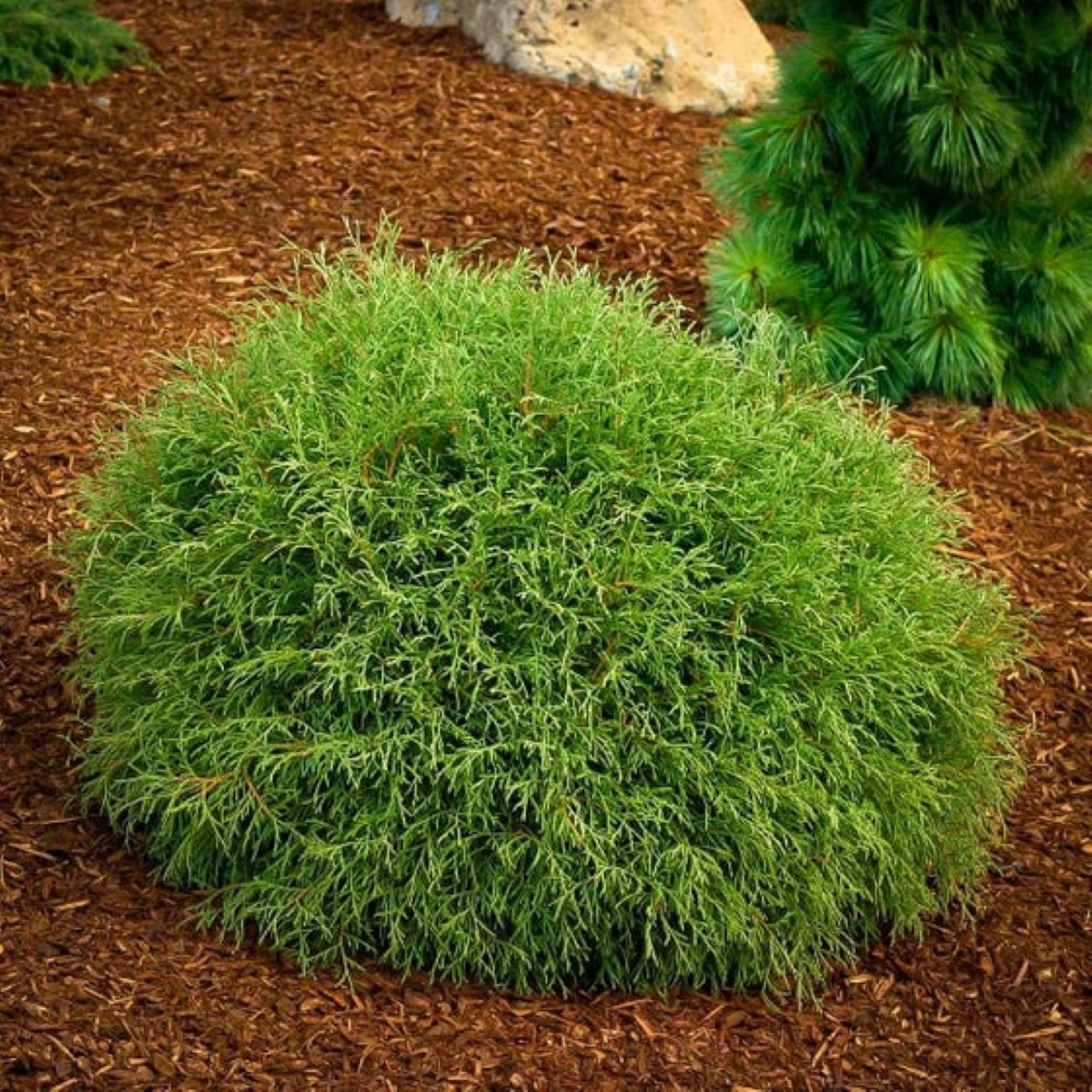
The ultra-ornamental Mr. Bowling Ball shrub grows into perfect little balls that are about 2 to 3 feet wide. The small evergreen Arborvitae feature a finely textured, feather-like sage green foliage that works well as an accent or a hedge. Plant this shrub in zones 3 to 7 to see it thrive.
RELATED: The 14 Best Shrubs for the Front of the House
2. Gardenia (Gardenia jasminoides)
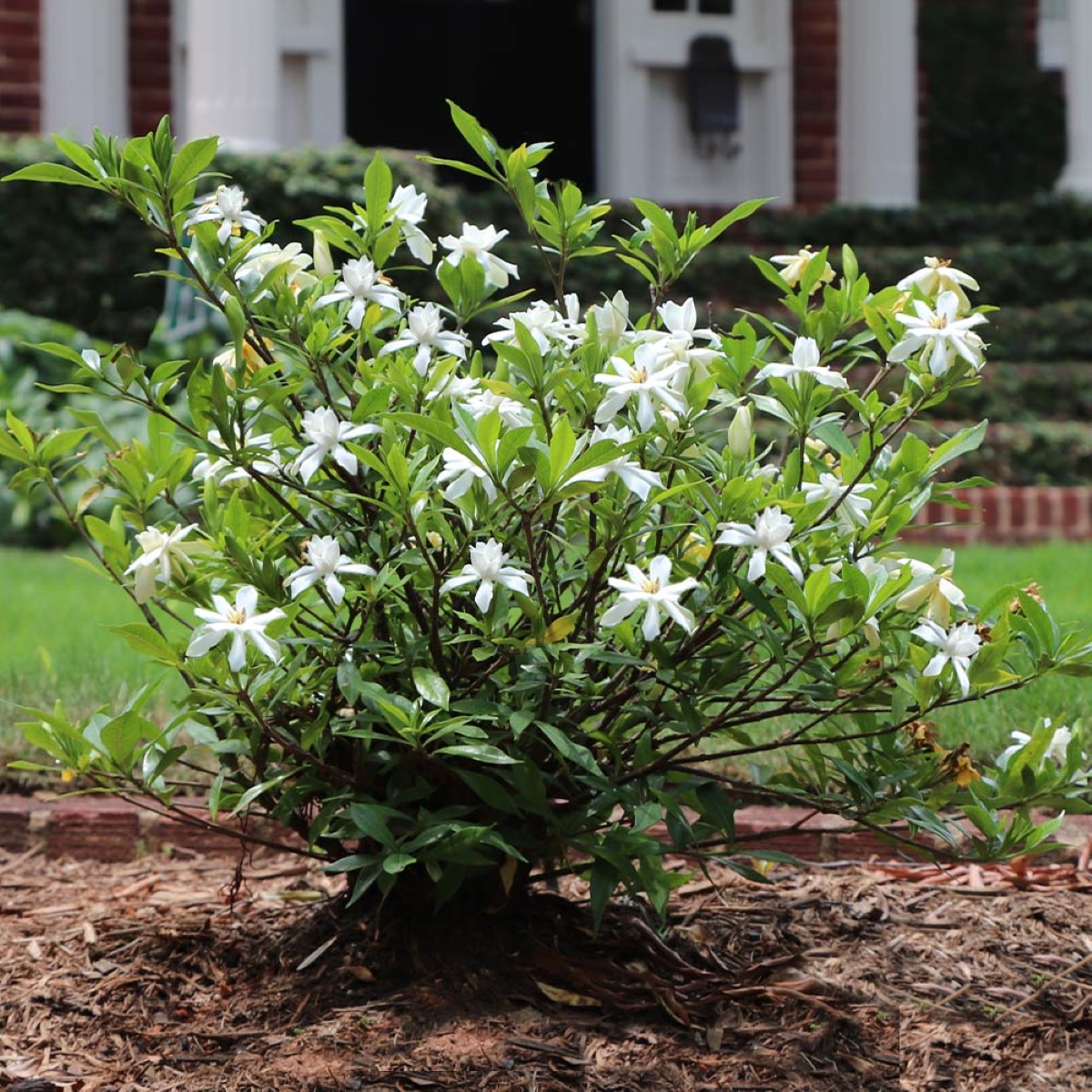
Often used in perfumes, gardenias are equally gorgeous and fragrant additions to a landscape. Their glossy foliage provides a beautiful background for gardenia’s long-blooming flowers, which are excellent for cutting and adding to a bouquet. Cultivated for more than a thousand years in China, this beautiful shrub is hardy in zones 8 to 11.
3. Blue Star Juniper (Juniperus squamata ‘Blue Star’)

Native to China and the Himalayas, Blue Star juniper has dense, spreading branches that are perfect for a rock garden, bank, or low border. Elegant and unique, this shrub with blue-gray foliage makes a definite impact and thrives in zones 4 to 8.
RELATED: 22 Shrubs That Can Handle the Heat of Full Sun
4. Camellia (Camellia japonica)

Keep stunning flowers blooming in your garden in spring and winter with camellias. These colorful shrubs are hardy in zones 7 to 9 and deliver eye-popping blossoms in red, pink, and white through fall and winter. Upright varieties can be trained into trees for a stunning garden accent.
5. Drops of Gold Holly (Ilex crenata ‘Drops of Gold’)
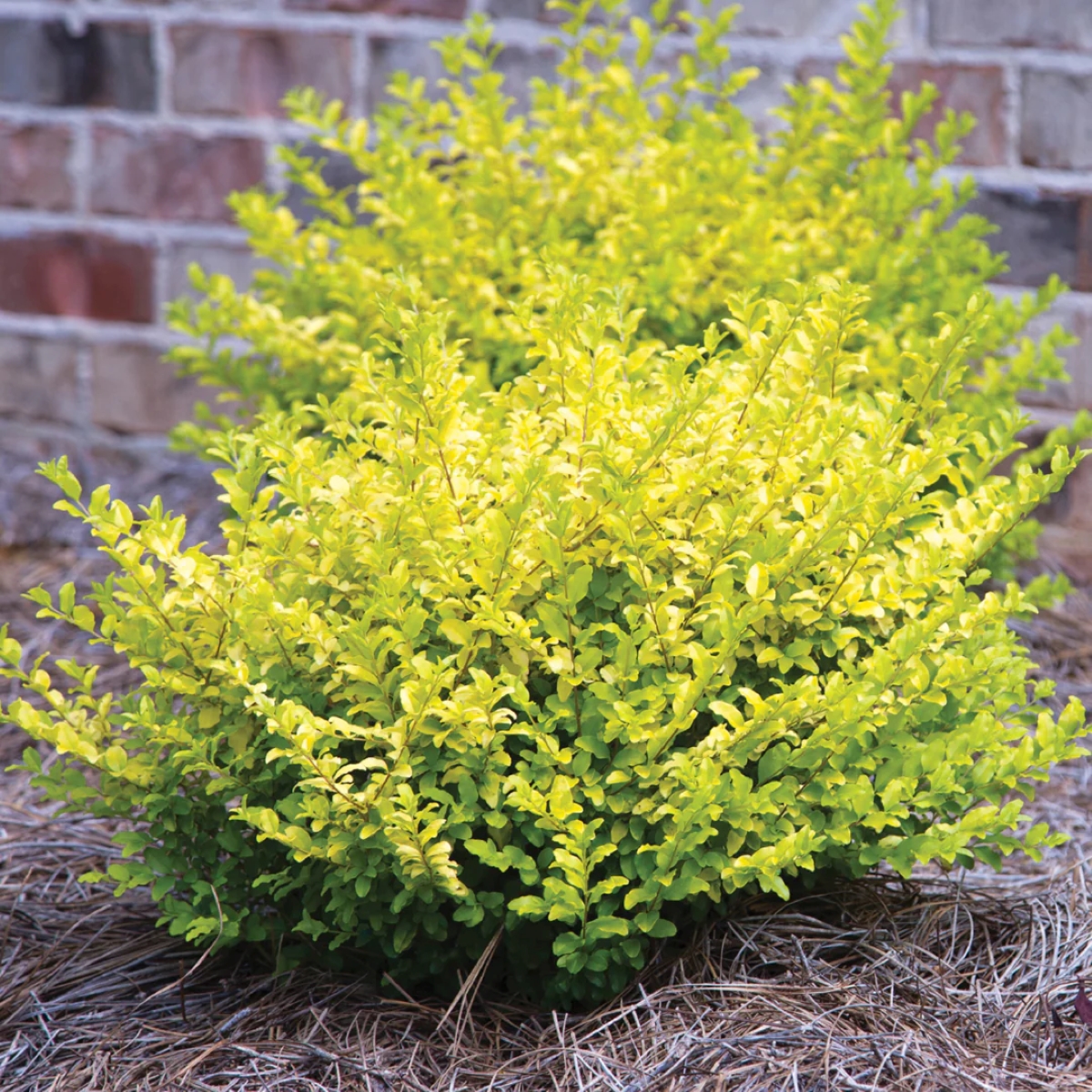
Make a dramatic statement in hedges or foundation landscaping with Drops of Gold holly. This yellow evergreen shrub’s gold top leaves are a brilliant contrast to the rich green foliage underneath. It can be sheared annually or left to take on an organic shape, which accentuates its variegated beauty. Plant it in zones 5 to 8 to see it thrive.
RELATED: How to Plant a Bush or Shrub
6. Spotted Laurel (Aucuba japonica)
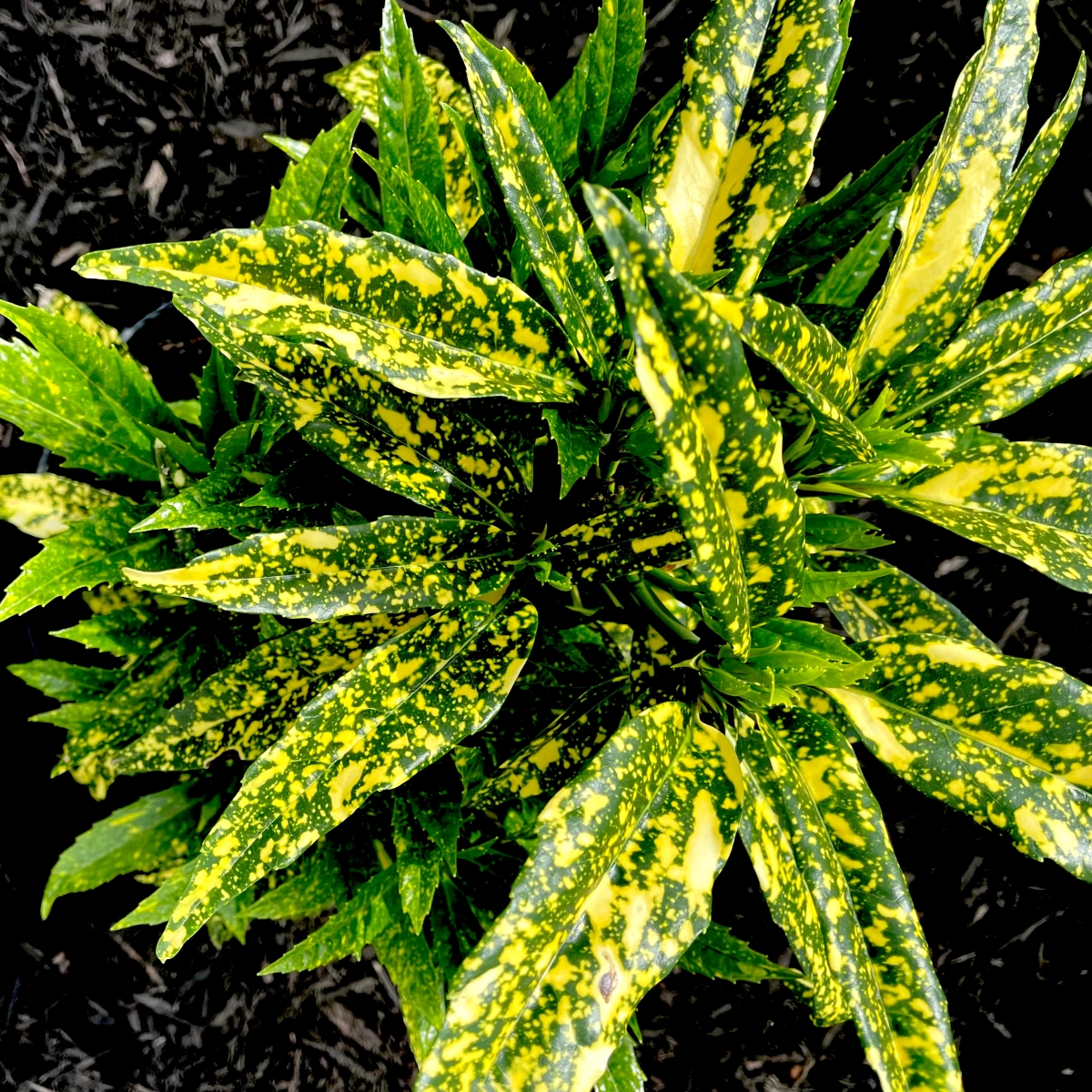
Splash color into a shady patch of your garden with spotted laurel, which has broad and bold upright stems with gold-spotted, dark green leaves. Like hollies, only the female plant produces berries and it requires a male pollenizer. These beauties grow best in zones 7 to 10.
7. Royal Purple Smoke Bush (Cotinus coggygria)
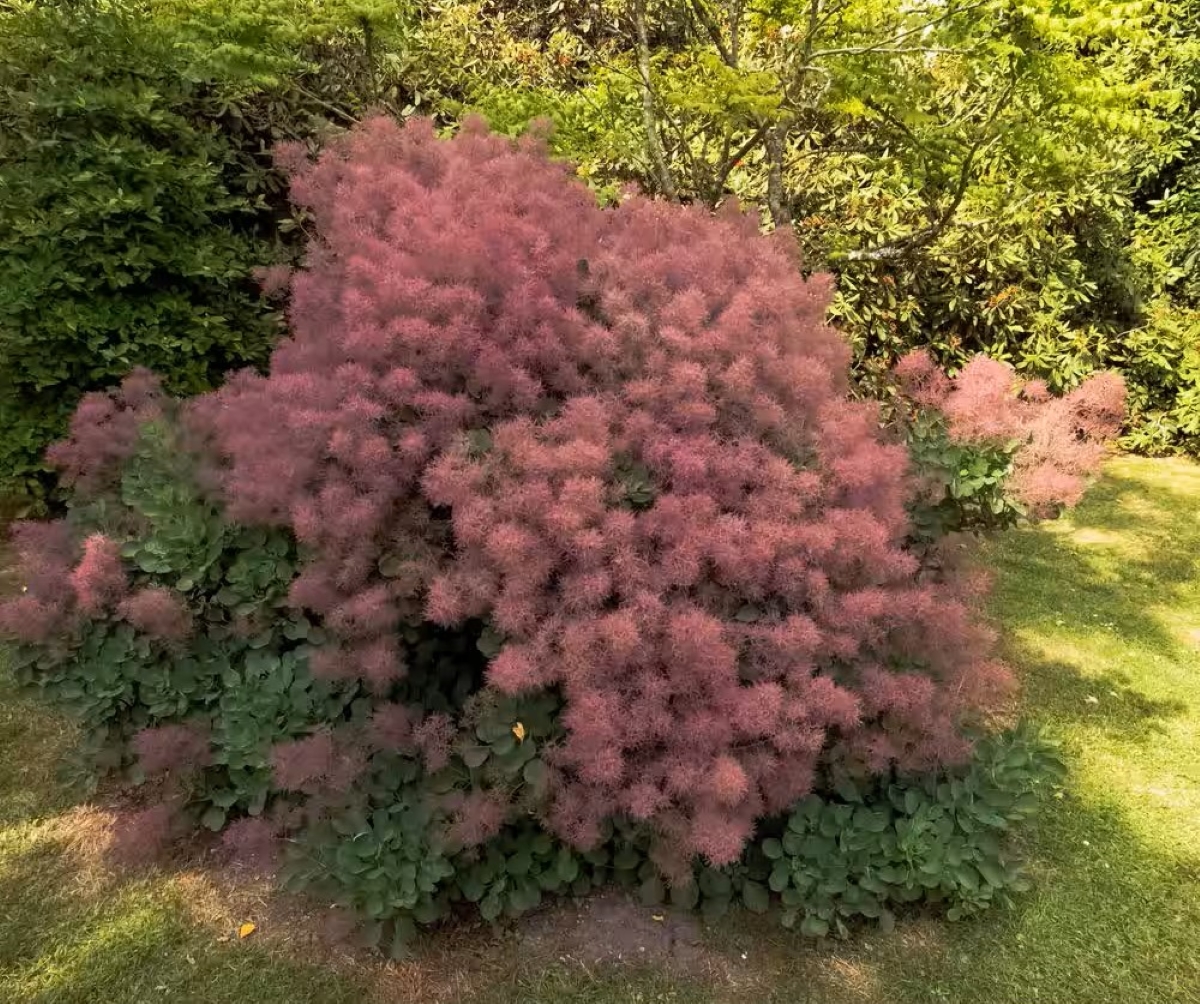
Invite lush changing color into your landscape with a smoke bush like this Winecraft Black variety. New growth opens red before deepening to rich purple that almost looks black, complemented by feathery flowers. Later, fall brings reds and oranges to its foliage. Growing to 4 to 6 feet high and wide, this is a standout as an accent, barrier, or border. It thrives in zones 4 to 8.
RELATED: The 15 Best Trees and Shrubs to Grow for Backyard Privacy
8. David Viburnum (Viburnum davidii)
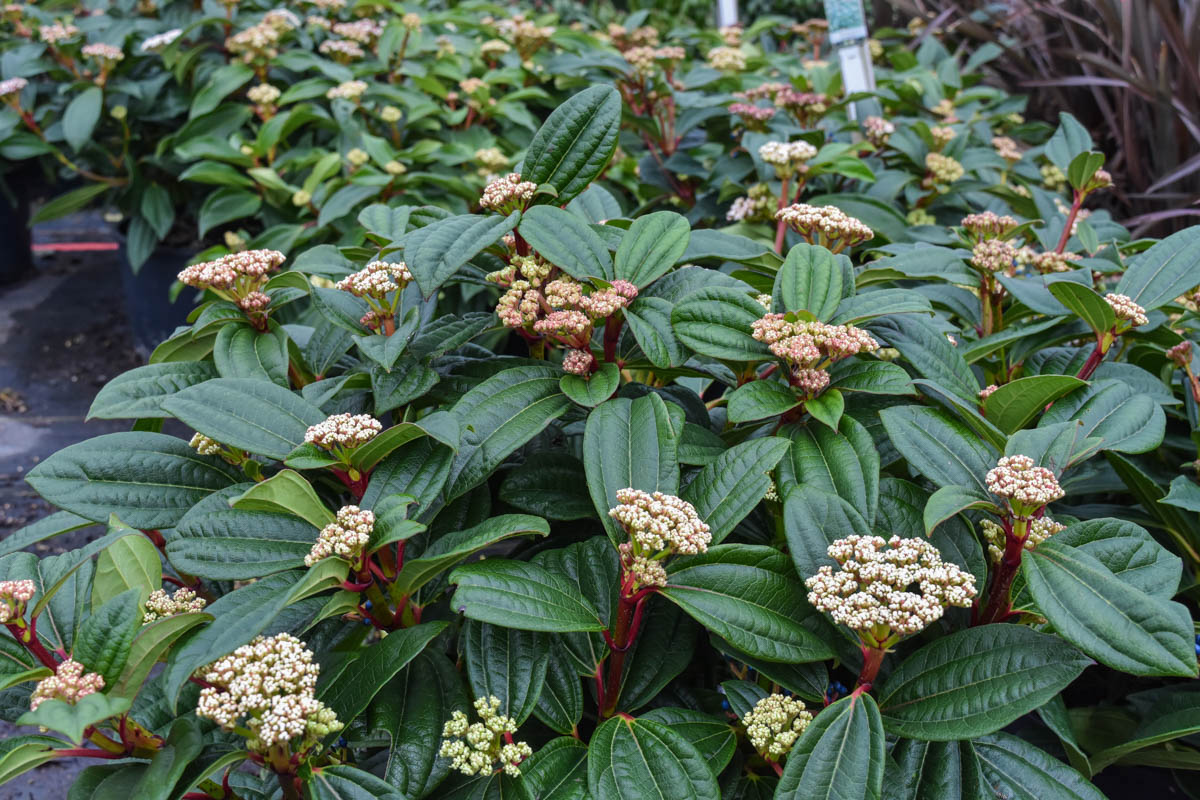
Provide year-round interest in your landscaping with David viburnum. It bursts with showy white flowers in spring, followed by brilliant blue berries in the fall that attract birds and butterflies. Plant two or more to ensure good cross-pollination for consistent berry production. These shrubs do best in zones 7 to 9.
9. Nandina (Nandina domestica)
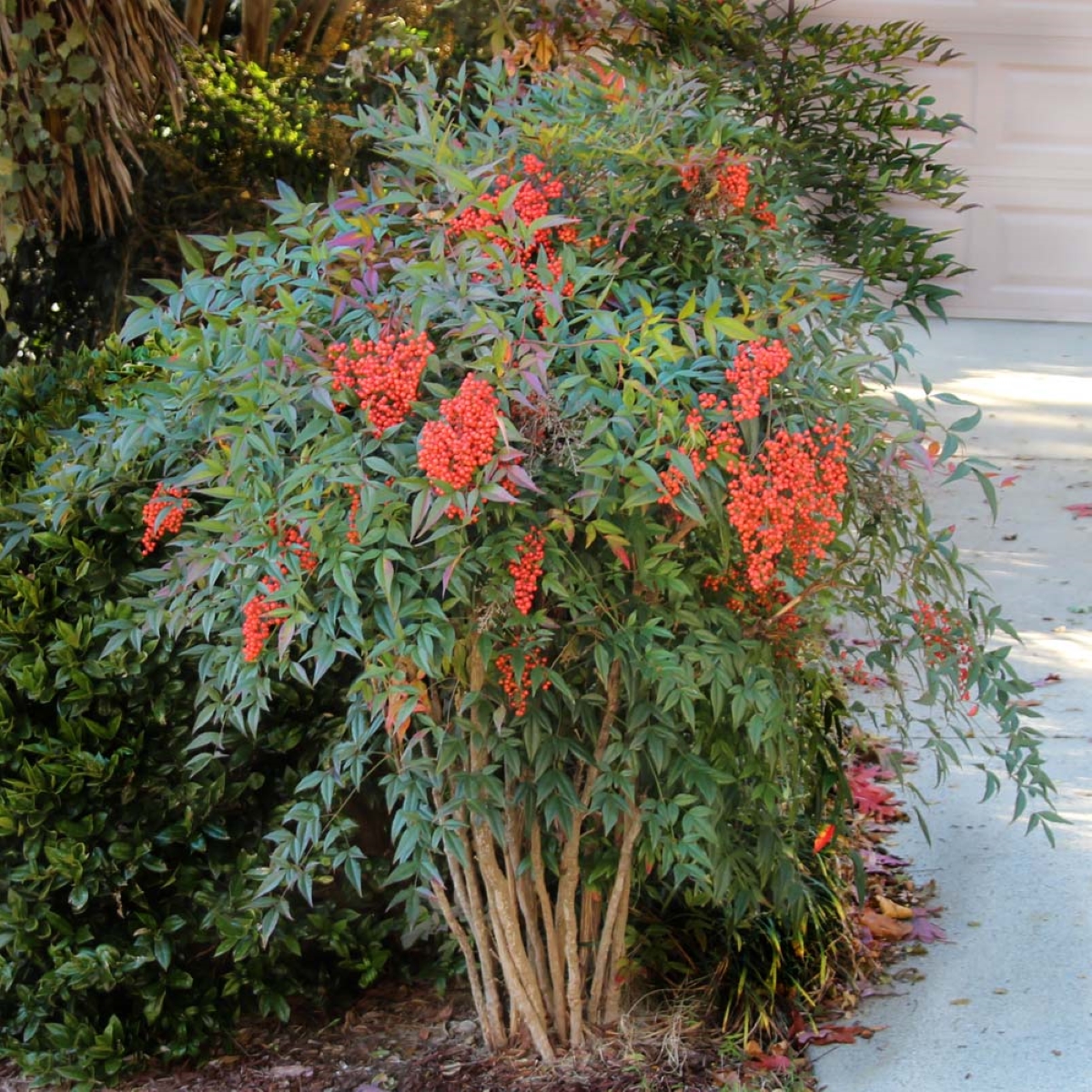
Also known as heavenly or sacred bamboo, nandina features showy fall foliage that is punctuated by masses of red berries through winter. Late spring brings on white flowers, which cascade over its soft, slender leaves, which typically are red but also come in burnt orange or even lime green. Upright and full to the base, it’s an outstanding addition to a porch or patio. Plant it in zones 6 to 9.
RELATED: 25 Easy-Care Plants That Survive With or Without You
10. Santolina (Santolina chamaecyparissus)
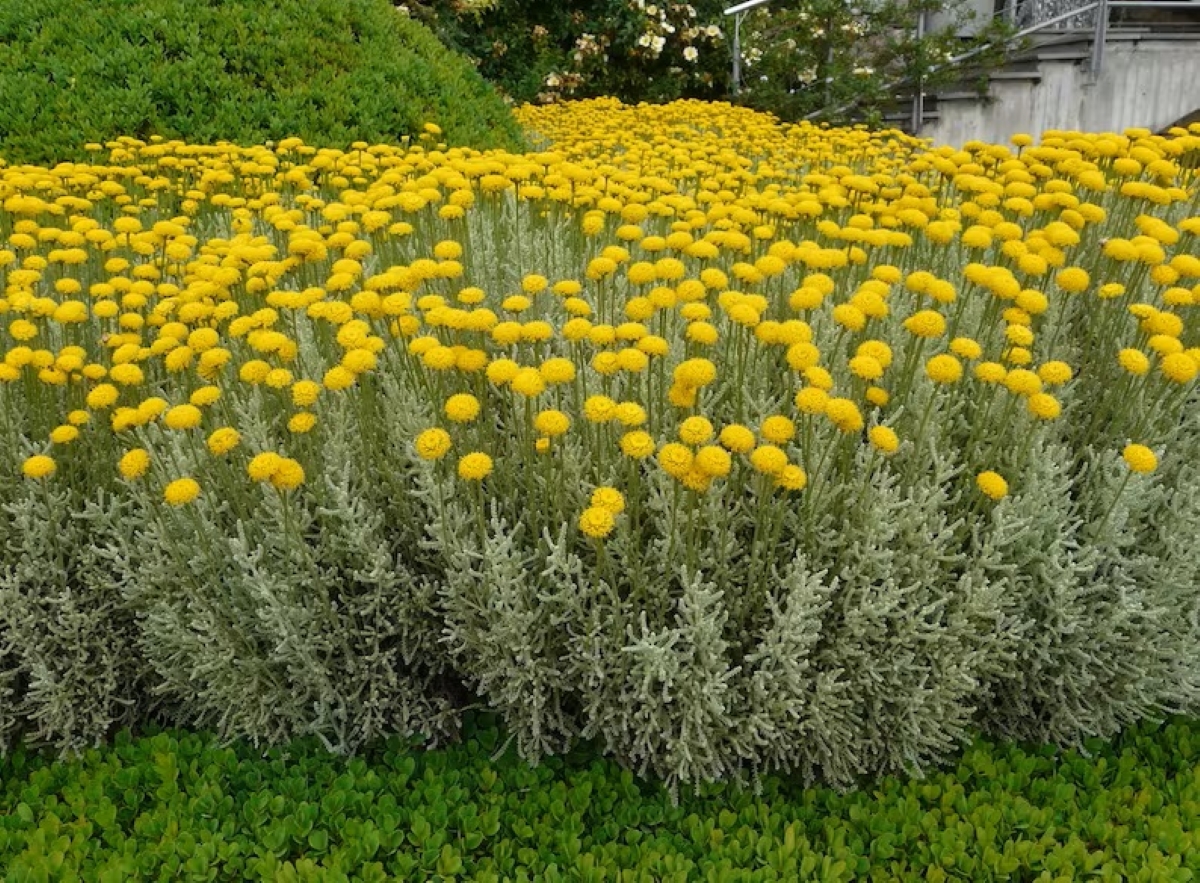
Finding an evergreen shrub that handles drought can be a tall order. Santolina, also called lavender cotton, is a small shrub/ground cover that can add winter interest with its silvery gray foliage. A native to the Mediterranean region, the herb is a good companion plant for actual lavender in zones 6 through 9. One reason is that it thrives in similar conditions of full sun, well-draining soil, and even drought. The other reason is the appearance of tiny yellow, button-shaped flowers above the foliage in summer. It also comes in a green form with light yellow flowers.
11. Rosemary (Salvia rosmarinus)
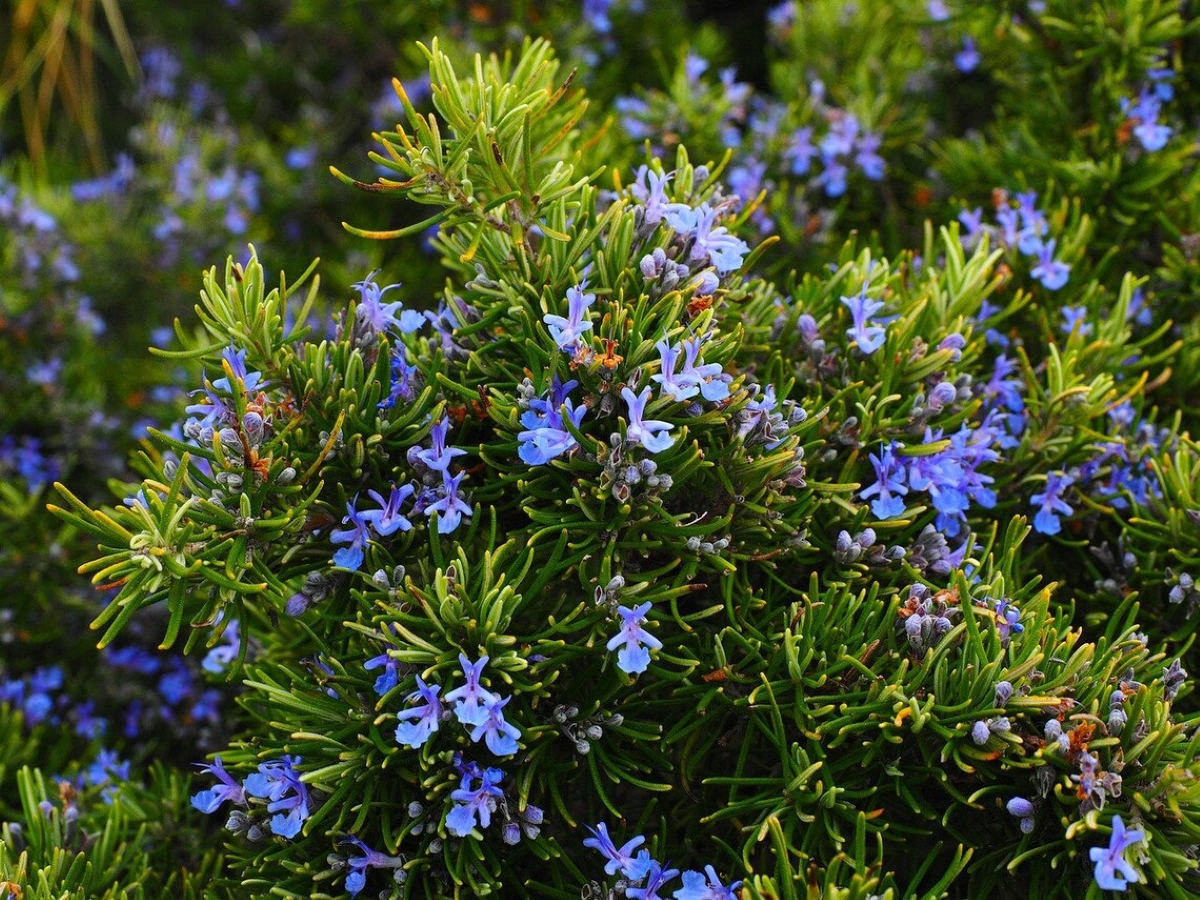
Rosemary is an evergreen shrub in warm climates, thriving in zones 8 to 10. Those who live in a colder climate can still plant rosemary successfully, but should select one of the few cold-hardy types such as Rosemary Arp (to zone 6) or Hill Hardy (zone 7) for evergreen color year-round. Otherwise, bring this shrub inside or cover it during the winter to protect it. The plant blooms with pretty lavender flowers during the spring and summer, and the foliage will fill the yard with its amazing aroma. It also tolerates drought and most soil conditions, but very humid environments can be too much for this fragrant evergreen shrub.
RELATED: How To: Propagate Rosemary
12. Yucca (Yucca aloifolia)
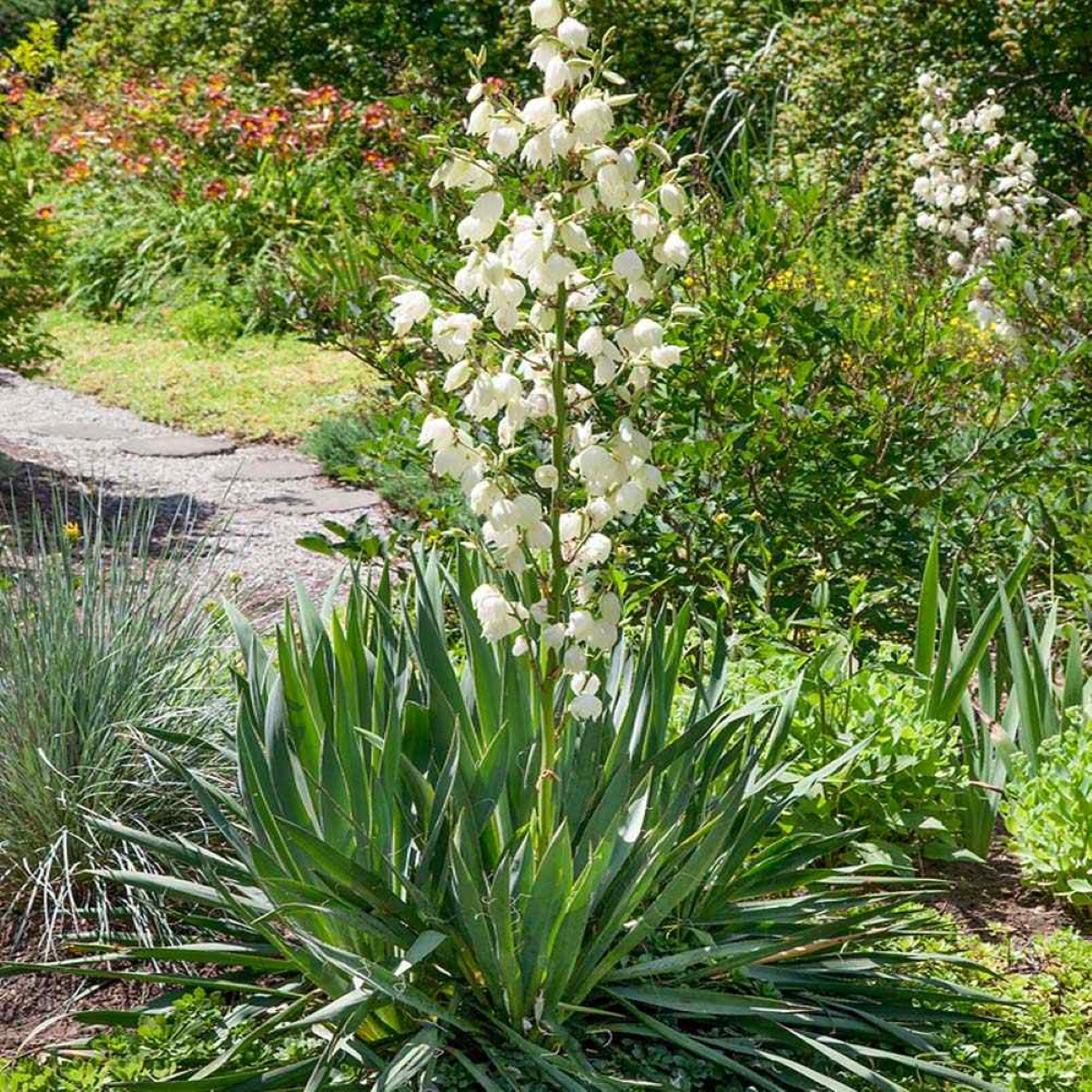
Native to the U.S. Gulf Coast and Atlantic, yucca plants boast showy panicles of bell-shaped flowers that bloom in the spring through late summer. These full sun shrubs do best with well-draining soil in zones 6 through 11, and they’ll attract bees, butterflies, hummingbirds, and songbirds to the yard. Yucca plant flowers also are edible, so you can cook them up or add them raw to a favorite salad.
13. Boxwood (Buxus spp.)

Boxwoods are low-maintenance shrubs that are easy to grow, so they’re a great fit for gardeners who might not have the greenest of thumbs. Growing boxwoods is fairly easy, too: They do well in just about every soil type and grow best in zones 5 to 9. The evergreen perennial bush is also quite dense, so they make for lovely hedges and topiaries. Plus, they’ll attract bees to your yard while resisting deer and rabbits.
RELATED: 15 Types of Boxwood Shrubs Every DIY Landscaper Should Know
14. Yew (Taxus baccata)
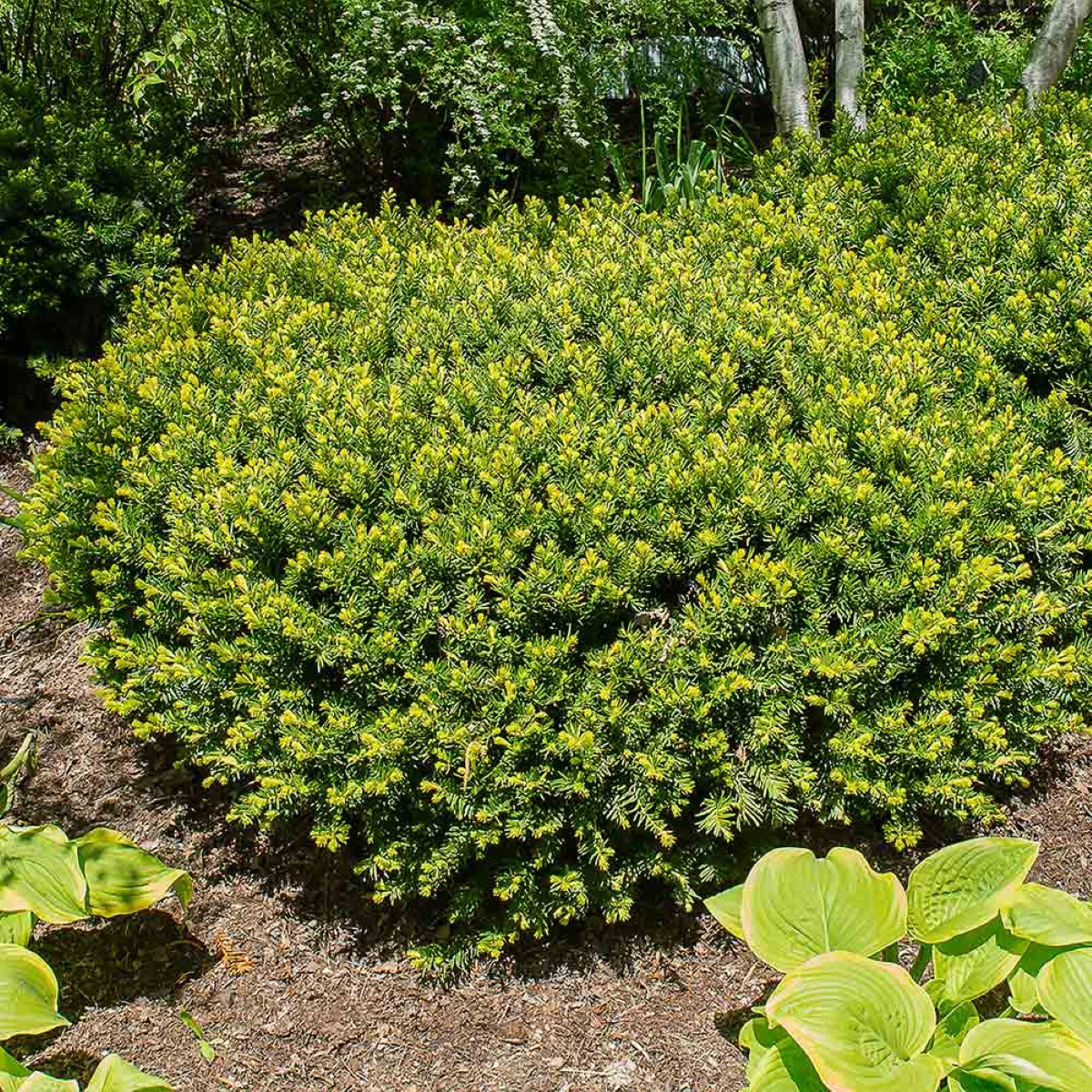
This large evergreen shrub features a conical shape and can grow as high as 30 to 60 feet, but it tolerates pruning well, so it is not difficult to maintain the size that works best for your landscape. Yew plants are hardy in zones 6 and 7, and the fast growing evergreen shrub has a large size and thick vegetation, ranking it among the best shrubs for privacy hedges. But they’re not very tolerant of extreme heat or cold, and they need well-draining soil to be happy.
15. Mugo Pine (Pinus mugo)
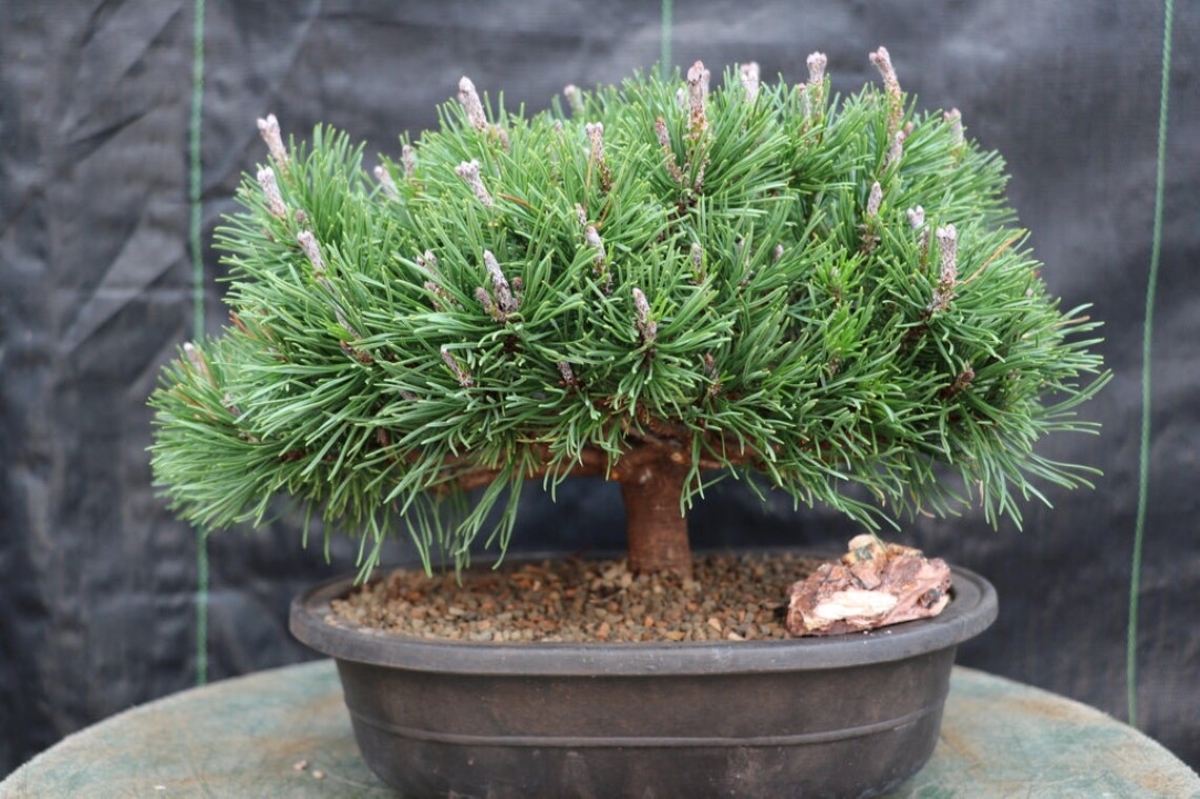
This bushy low-growing evergreen shrub is a great choice for a foundation plant, but it also looks lovely when planted in patio containers or along walkways. It’s hardy in a wide range of zones 2 through 7, so it can grow in a variety of climates. The evergreen shrub also is resistant to deer, drought, and salt spray. Mugo pine is even resistant to pollution, making it a stellar choice for urban dwellers looking to enhance their yard or balcony year-round.
RELATED: The 20 Best Winter Plants for Year-Round Curb Appeal
16. Firethorn (Pyracantha coccinea)
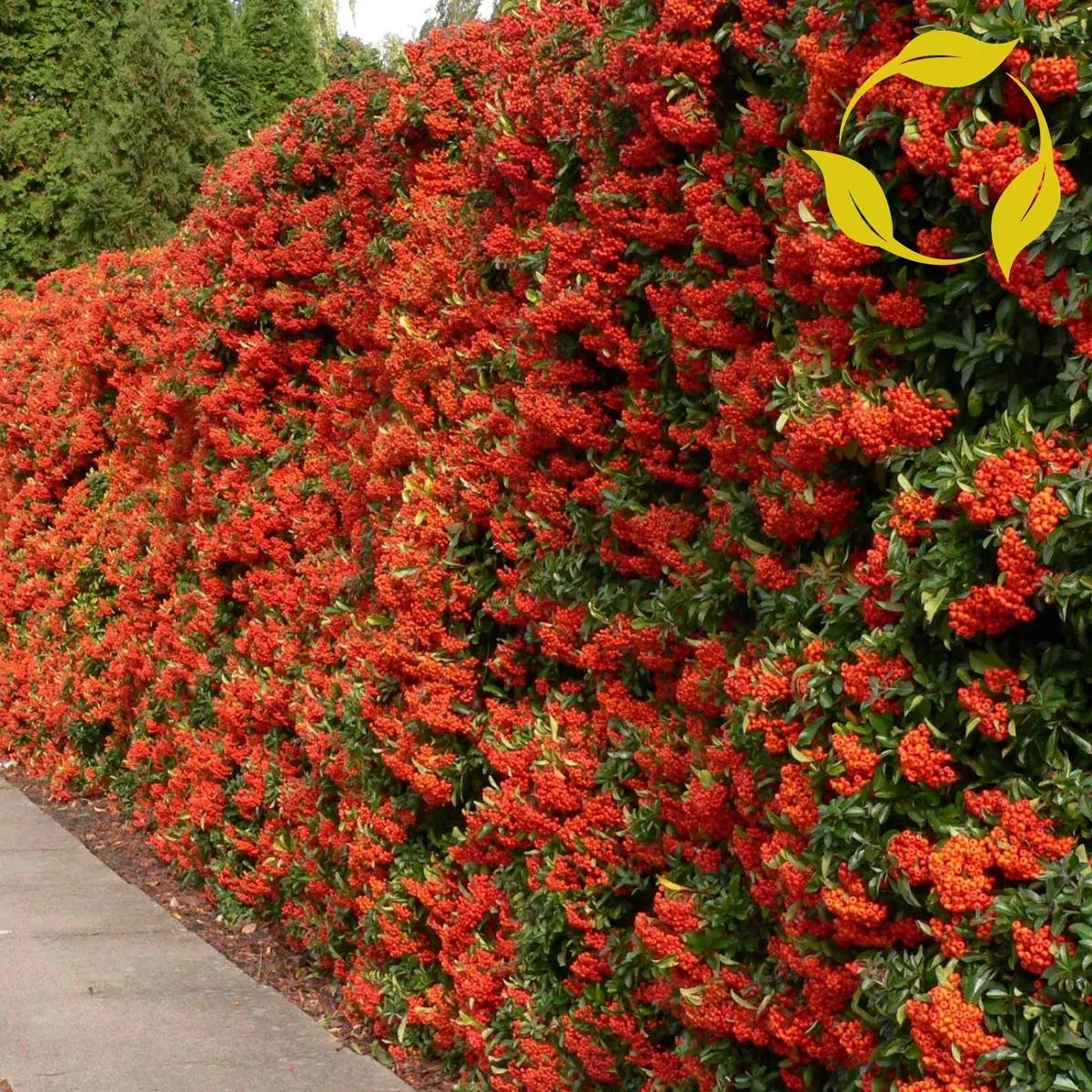
Those who live in zones 6 through 9 and love the idea of adding a splash of color to their yard might consider planting firethorn. In the spring and summer, the evergreen shrub will delight with showy white flowers, but its bright crimson berries, which pop up in the fall and persist throughout the winter, are what this beauty is best known for. When planted as a hedge, firethorn is virtually impenetrable due to its density and thorny branches, so it can be used for both security and privacy evergreen shrubs.
17. Rhododendron (Rhododendron)
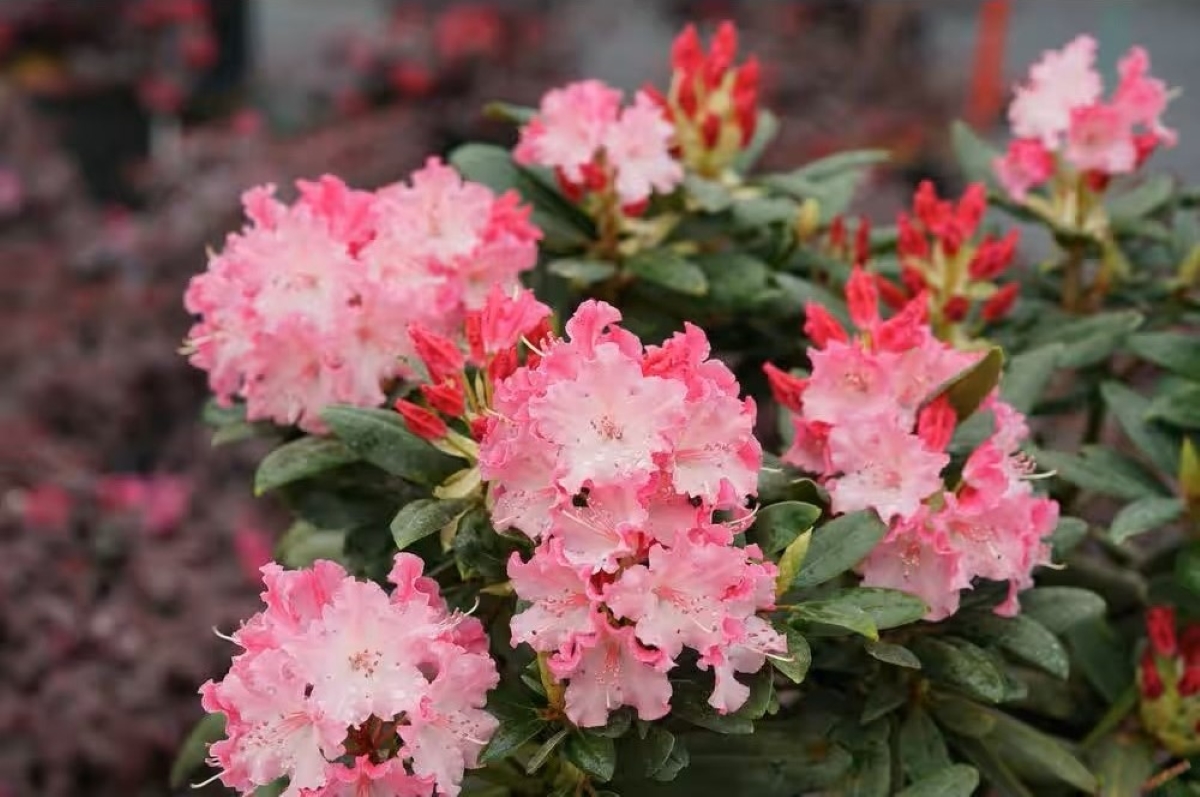
These woody evergreen shrubs are native to the U.S. and feature beautiful funnel-shaped flowers that put on a show in late spring. Hardy in zones 4 to 8, rhododendron plants are a major draw for hummingbirds and bees, so they’re a great way to add splashes of pink, purple, and red to a pollinator garden. They will need acidic soil that drains well.
RELATED: 12 Plants With Year-Round Pollinator Appeal
18. Heath (Erica carnea)
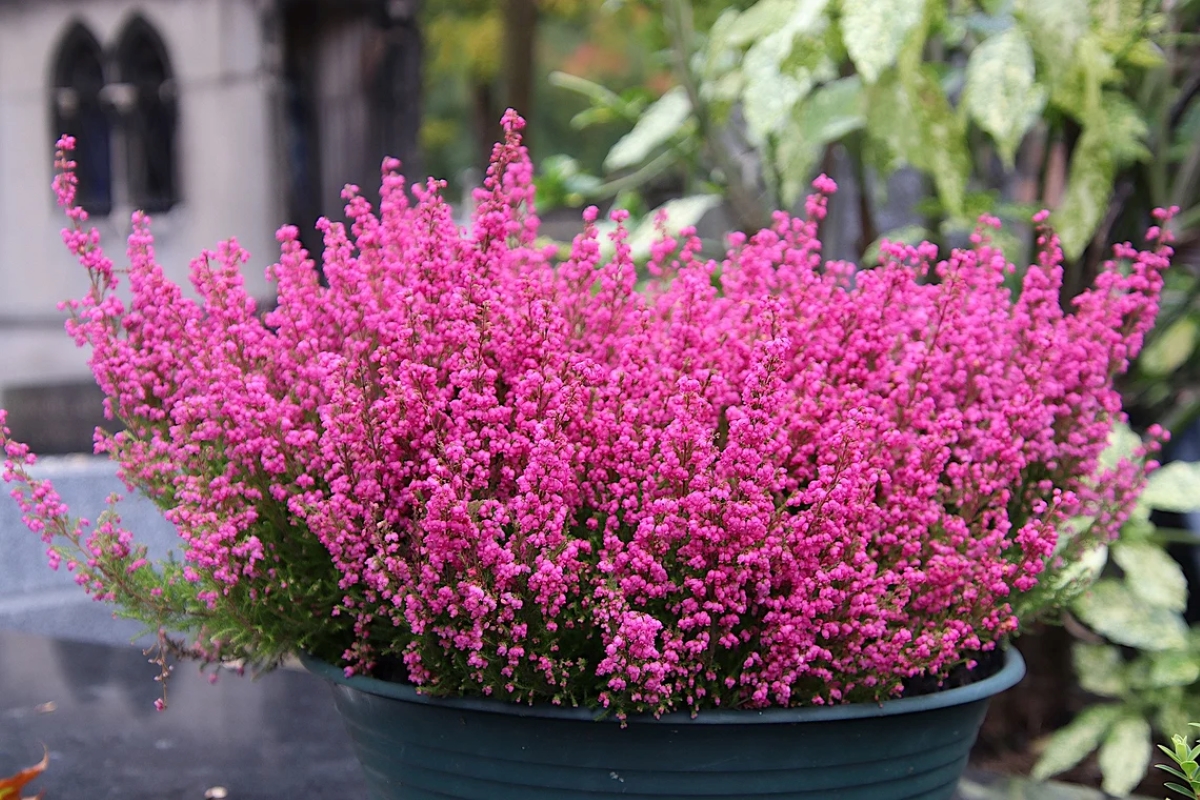
This low-growing evergreen shrub spreads easily, making for beautiful year-round ground cover. And it boasts a particularly long bloom season, with showy flowers that can show up from late winter through spring and fall, depending on the species. Heath thrives in zones 7 to 9 and does best with well-draining soil in full sun or partial shade. This pretty plant will also attract bees to the yard, yet is among the evergreen deer-resistant shrubs.
19. False Cypress (Chamaecyparis)
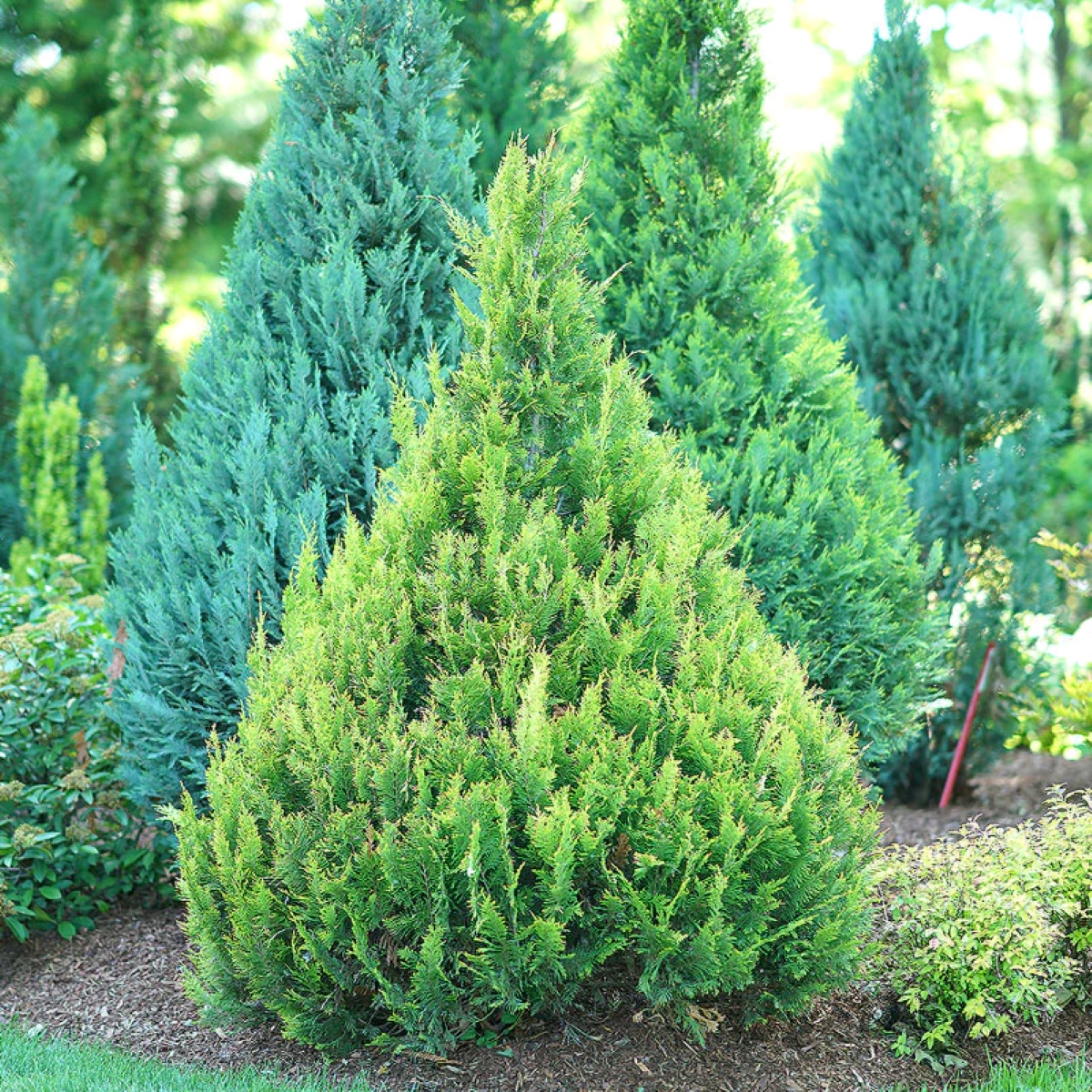
False cypress is a low-maintenance evergreen shrub native to the North American coasts. It features a conical shape that can grow from 1 to 99 feet high, depending on pruning, so it’s a nice addition to a vertical garden in nearly any climate (USDA Zones 2 through 13). False cypress is deer-, drought- and salt-resistant, which adds to its low-maintenance appeal, as does the fact that it can thrive in full and partial sun, yet also as an evergreen shrub for shade.
RELATED: 17 Deer-Resistant Plants, Flowers, and Shrubs
20. Bird’s Nest Spruce (Picea abies ‘Nidiformis’)
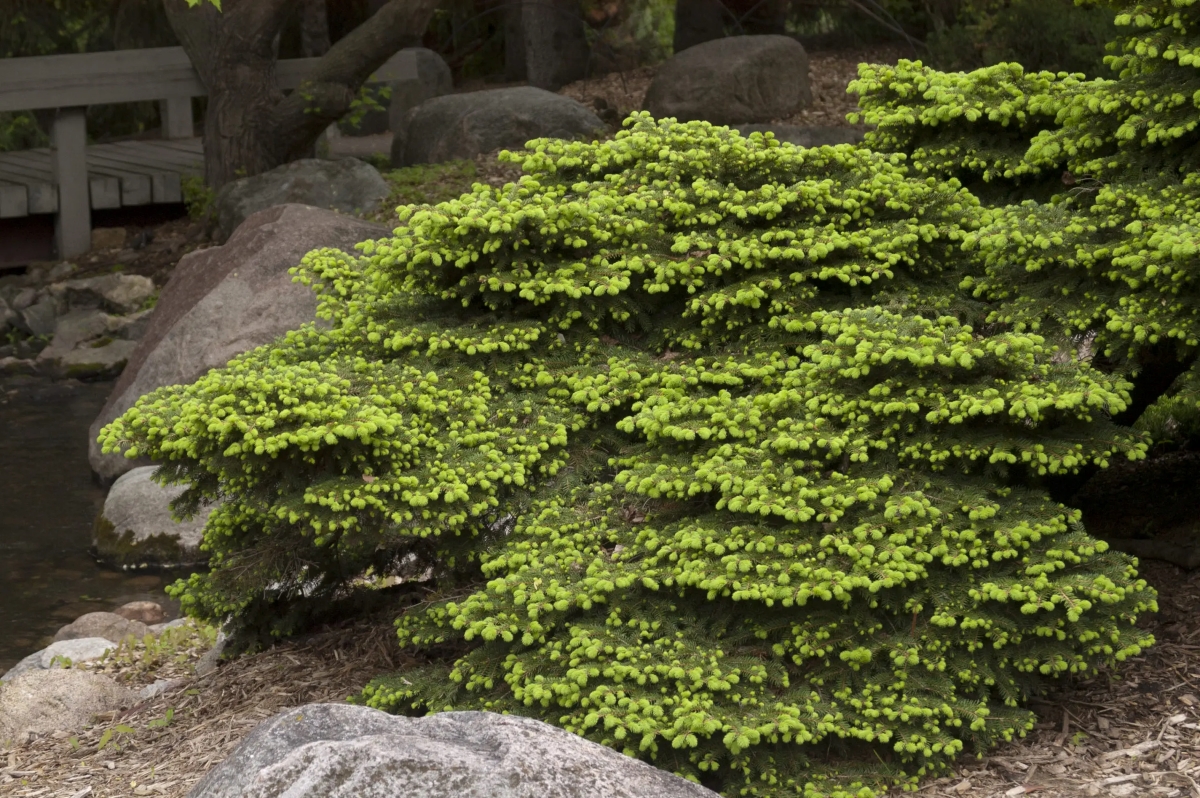
Bird’s Nest spruce is a low-growing evergreen shrub with spreading horizontal branches that form a flat-looking globe. In the center, there’s a slight depression, which looks somewhat like a bird’s nest, hence the name. In terms of shrubs for evergreen landscaping, this one is a nice accent or border plant, plus it grows well in containers or as a ground cover. These little shrubs prefer full sun and grow best in zones 3 to 6.
